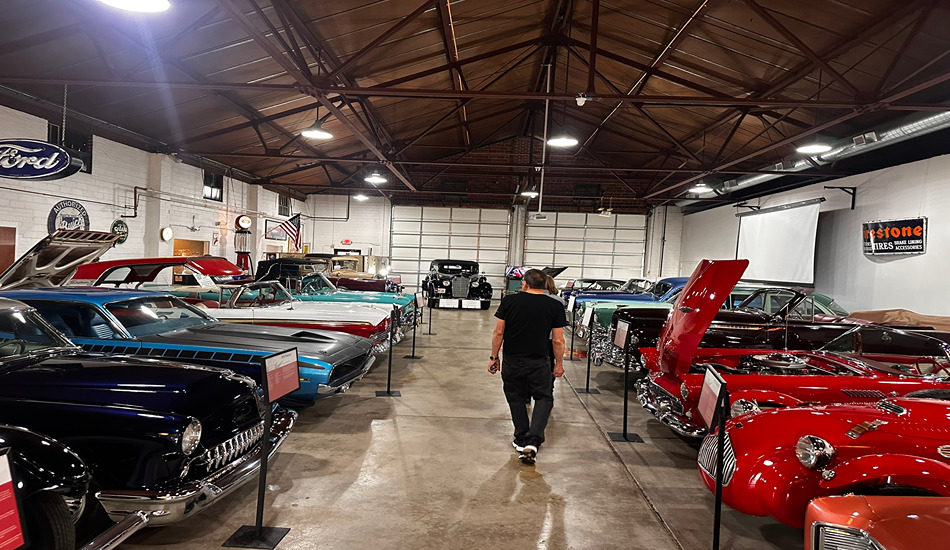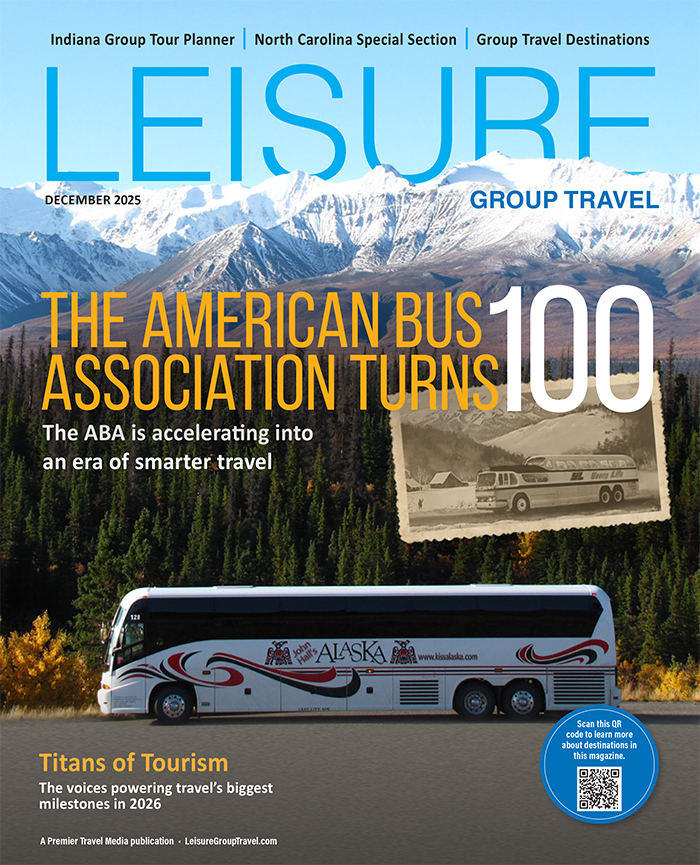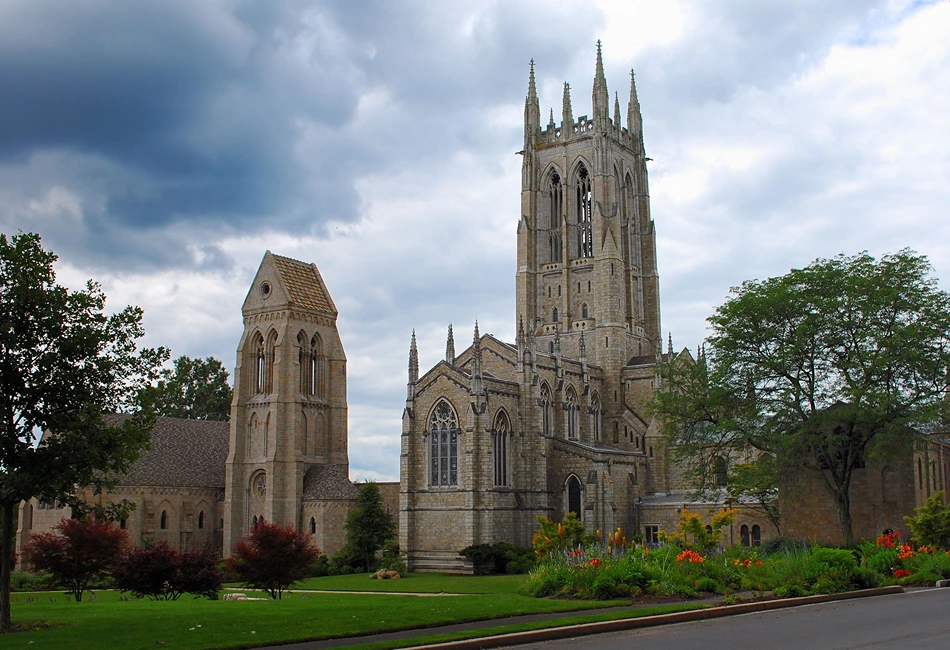Glimpses into yesteryear await nostalgia-minded travelers in towns gearing up to welcome guests in 2026, the 100th anniversary of Route 66
Since 1926, no other roadway in American history has evoked a sense of reverence, nostalgia and wanderlust quite like Route 66. Running between Chicago and Santa Monica, California, the 2,448-mile asphalt artery was synonymous with road trips and the golden age of automobile travel.
Though interstate superhighways have supplanted the so-called Main Street of America, many stretches of old Route 66 are still open to traffic, providing peeks into America’s past as it threads towns big and small. Oklahoma has 432 drivable miles of Route 66, more than any other state.
Those who explore Route 66 during its centennial in 2026 will be treated to more fun than usual. Plans are underway for special projects and celebrations in communities across the country.
In Oklahoma, towns and individual attractions are taking advantage of the Route 66 grant program administered by the Oklahoma Route 66 Commission and Oklahoma Department of Commerce to fund infrastructure improvements and add new attractions. I just returned from a week-long Oklahoma trip that included two days on the central stretch of Route 66, from Sapulpa to Oklahoma City.
For information on other Route 66 destinations, subscribe to Leisure Group Travel for FREE.
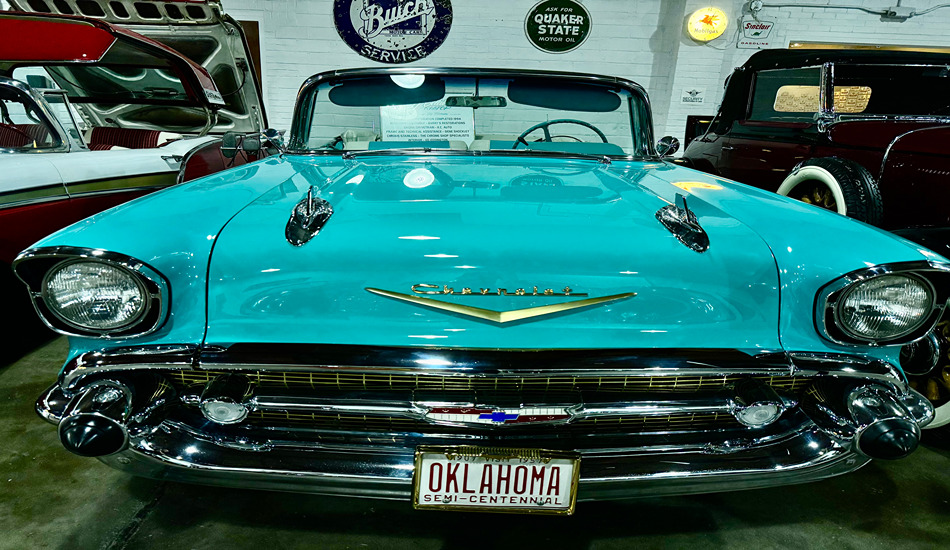
Heart of Route 66 Auto Museum in Sapulpa. (Randy Mink Photo)
Sapulpa and Stroud Are Getting Ready for the Route 66 Centennial
Sapulpa, just southwest of Tulsa, offers an inviting downtown shopping core that will be even more attractive when its streetscape redesign is completed. An Oklahoma Route 66 grant is fueling the Dewey Avenue facelift and a new park centered on Rock Creek Bridge, once part of the old highway.
Dewey Avenue, lined with buildings from the early 1900s, offers an inviting mix of coffee shops, restaurants, clothing boutiques, gift shops and antiques stores. The gussied-up street will sport trees, flower baskets and wider sidewalks. Lanes of traffic are being reduced from four to two, with a median designed to be reminiscent of trolley tracks of yesteryear.
The steel-truss Rock Creek Bridge, built in 1921, has been closed for years and will reopen to pedestrian traffic when the new park is completed. Nearby, the Teepee Drive-In, an outdoor movie theater dating from the 1950s, was recently restored and accommodates up to 300 cars. Concessions are housed in ’50s travel trailers, and trailers also are available for overnight stays.
Other Sapulpa crowd-pleasers include Heart of Route 66 Auto Museum, where you can ogle classic cars polished to perfection and pose by the world’s tallest gas pump (soaring 66 feet into the sky). Of special interest is the amphibious Ford Amphicar, which has twin propellers under the rear bumper. From May to September, visitors can take a spin in a 1922 Cadillac or Packard.
Route 66 has always been a corridor of commerce, and neon beacons have lit the way, encouraging travelers to stop a spell and contribute to the local economy. In Stroud, a grant has been awarded for a neon light project that will provide a sign for participating businesses along the entire 15-block stretch of the historic downtown.
A separate grant will go toward restoring the vintage neon sign at Stroud’s Rock Cafe, a favorite Route 66 diner since 1939. Owner Dawn Welch was the inspiration behind the character Sally Carrera in Disney/Pixar’s Cars, and movie memorabilia lines the walls. This is the place for chicken-fried steak with white pepper gravy, but the German-inspired dishes are tempting as well, as are the burgers and homemade chili with homemade corn bread. The biscuits are the best anywhere and often sell out early.
The Rock Cafe burned to the ground in 2008 and was rebuilt a year later; only its exterior rock walls and original grill, nicknamed Betsy, survived. For groups, one of four meal options comes with a historical talk and a souvenir cup.
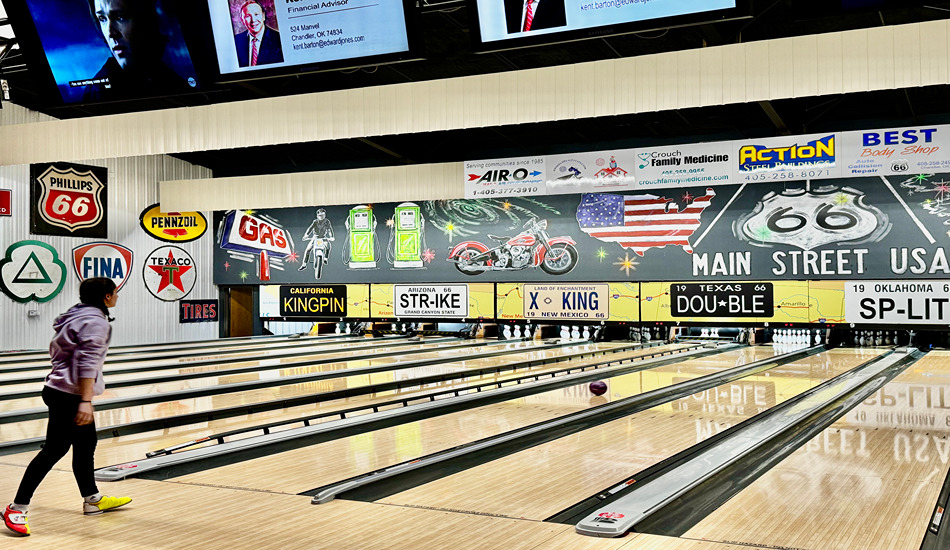
Route 66 Bowl in Chandler, Oklahoma brims with nostalgia on and off the alleys. (Randy Mink Photo)
Chandler and Arcadia Offer Classic Route 66 Attractions
At Route 66 Bowl in Chandler, a short drive west of Stroud, I was bowled over by the massive collection of old license plates, gas pumps, neon signs and oversized metal advertising signs—eye candy for Route 66 and nostalgia fans like me. Besides a 16-lane bowling alley, Route 66 Bowl offers mini golf, laser tag and pool tables. Each pair of bowling lanes is named for one of the eight states on Route 66. Upstairs, bowlers can test their skill on the 101-foot-long lane. In back of the cavernous amusement center, the owner is converting metal grain bins into stylish cabins for overnight guests and creating an area for RVs.
The Route 66 Interpretive Center in Chandler occupies a former National Guard armory. At six stations, guests can watch short videos on various aspects of Route 66 from the comfort of a “motel bed” or a seat in a cozy mini theater.
Seaba Station Motorcycle Museum, in a former 1920s gas station between Chandler and Warwick, exhibits a large collection of motorcycles dating as far back as 1908, along with vintage toys and Route 66 memorabilia.
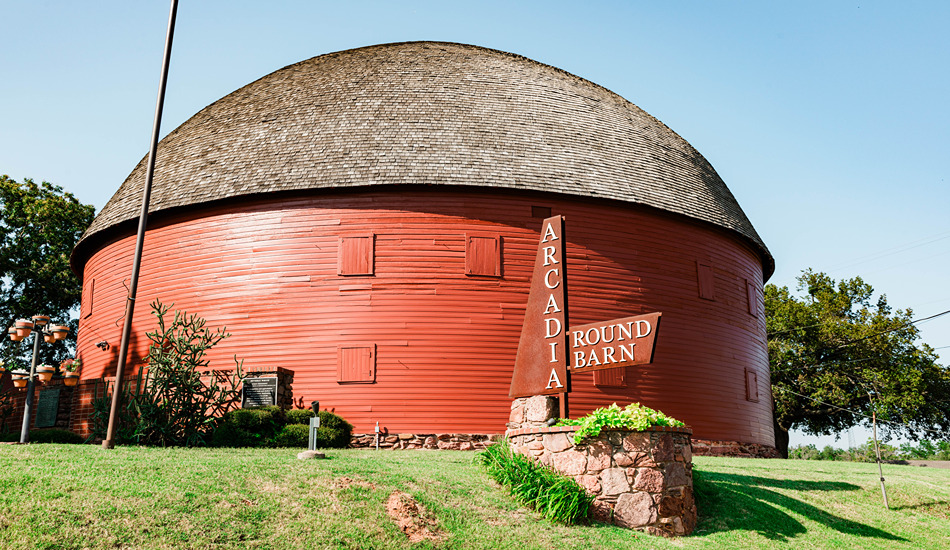
Arcadia’s Round Barn is a must-see on Route 66 in Oklahoma. (Photo credit: Oklahoma Tourism & Recreation)
Arcadia boasts two irresistible photo stops. The 1898 Round Barn, a handsome red landmark, was brought back from the brink of collapse by dedicated volunteers known as the “over-the-hill gang,” as most of the men were of retirement age. The lower level has a museum with farm equipment and other antiques. You can climb up to the loft to see the roof’s cedar bracing, which resembles the inside of a woven basket.
In the Route 66 tradition of over-the-top art, Arcadia’s Pops 66, an ultra-modern glass building housing a diner/soda fountain, sports a futuristic, 66-foot-tall soda pop bottle that’s bathed in multicolored LED lighting when the sun sets. Pops 66 sells more than 700 varieties of pop, with flavors ranging from birthday cake and cookie dough to honeydew melon and coconut cream lime.
The Chicken Shack, also in Arcadia, is a spacious place with plenty of seating, indoors and outdoors. Known for its broasted chicken, the group-friendly restaurant has 66 beers on tap and often features live music in the backyard venue.
For information on other Route 66 destinations, subscribe to Leisure Group Travel for FREE.
Oklahoma City Abounds with Things to See and Do
Oklahoma City, the state capital, boasts more than 55 miles of Route 66 and has some 200 signs directing travelers along several historic alignments threading vibrant commercial districts.
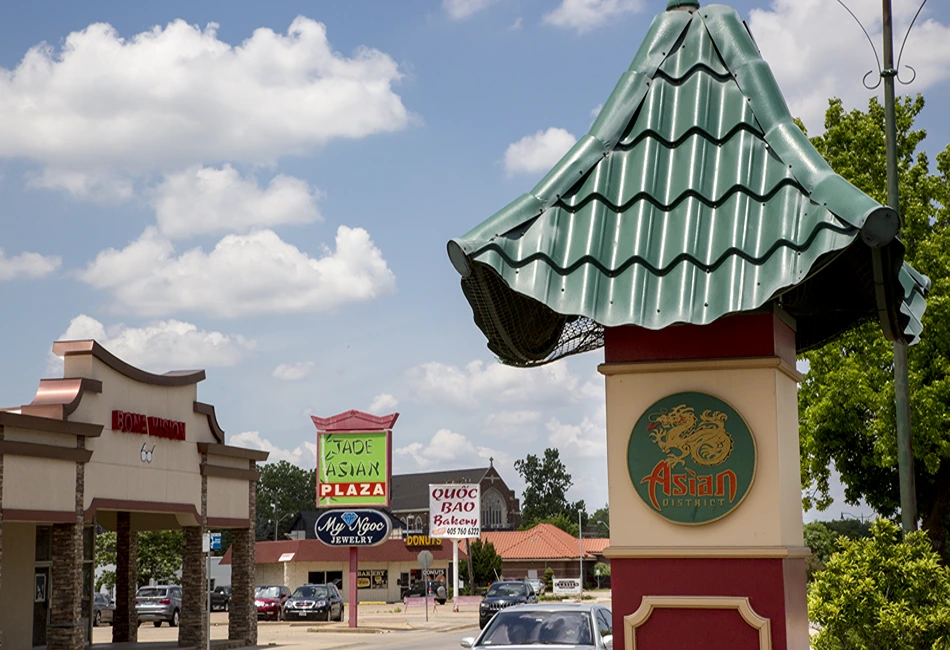
The Asian District is one of Oklahoma City’s prime culinary destinations. (Photo credit: Oklahoma Tourism & Recreation)
The city’s Asian District, home to a thriving Vietnamese community that started in the 1970s by an influx of immigrants, is the only such enclave on the entire length of Route 66. A culinary hotspot, it abounds with Vietnamese, Korean and Chinese eateries, many of them on NW 23rd Street (old Route 66) and Classen Boulevard. Oklahoma Food Tours offers walking and bus tours that include food and beverage stops at multiple restaurants.
A tiny triangular building sitting on an island near the intersection of 23rd and Classen, Braum’s Milk Bottle Grocery is a favorite Asian District photo stop. Since 1948, the roof of the former grocery store has been crowned with a giant milk bottle advertising Braum’s, a beloved Oklahoma dairy and fast food chain known for its ice cream. The 1930s building now houses a private salon.
The proposed Route 66 Neon Park in Oklahoma City will feature 10 iconic signs originally visible on Oklahoma’s stretch of Route 66 from 1939-2016, all fully restored with neon lighting. The free outdoor exhibit, with a walk-through path, an Airstream-style bandstand for concerts, vintage billboards and a bathroom facility modeled after a 1950s Phillips 66 Gull Wing service station, will be strategically located at the Oklahoma History Center, across from the Oklahoma State Capitol.
Oklahoma claims the only capitol building directly on Route 66 and the only one with an oil derrick and working pump on its grounds. Fully restored in 2022, the State Capitol features more than 100 sculptures, murals and framed paintings throughout the hallways and rotunda. Free tours are given on weekdays.
Route 66 fans will want to make a pilgrimage to Wheeler Riverfront Plaza and take a ride on the Wheeler District Ferris Wheel, which once stood at the western terminus of Route 66, 1,300 miles away. An iconic fixture on the famous Santa Monica Pier, the nine-story, 20-gondola wheel was purchased in 2008 for $132,400, reassembled and upgraded, and opened for business in 2016 along the Oklahoma River, across from downtown OKC. The greenspace around the wheel offers hammocks, cornhole and other lawn games, food trucks, restaurants, a brewery, seasonal farmers market and summer music series.
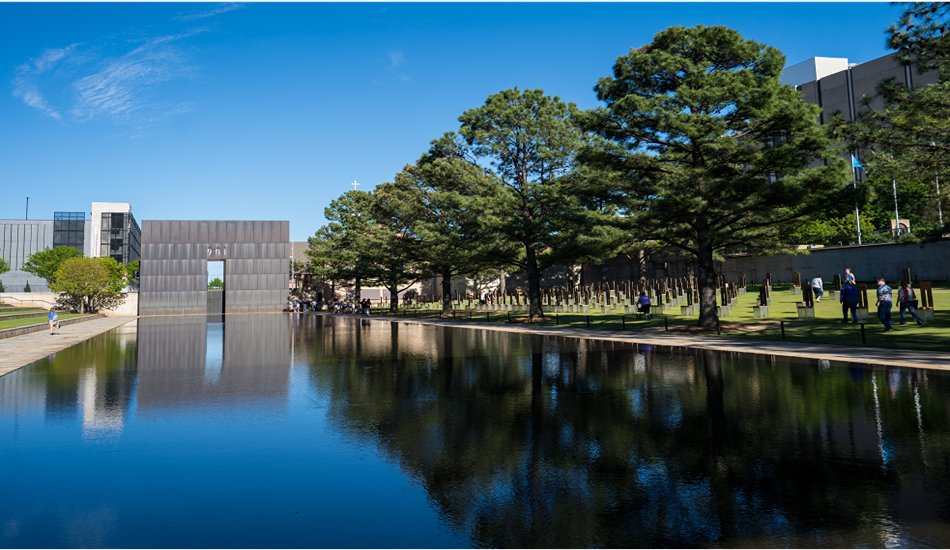
Oklahoma City National Memorial. (Photo credit: Oklahoma City CVB)
Oklahoma City National Memorial & Museum, a must-visit spot downtown, captures the community spirit and resilience shown by Oklahomans as they grappled with the unthinkable, an event known as the Oklahoma City bombing. On-the-scene news reports, still photographs and interactive features and artifacts (including the actual getaway car and part of the rental truck) chronicle the devastation and carnage caused by a 4,800-lb. truck bomb that detonated outside the Alfred P. Murrah Federal Building on April 19, 1995. In the Track the Trail of Evidence gallery, artifacts include the getaway car and part of the rental truck. The deadliest homegrown terrorist attack on U. S. soil claimed 168 lives and injured 850. This sacred ground, the city’s beating heart, honors victims, survivors and rescuers.
The tree-shaded outdoor memorial features a reflecting pool and rows of bronze-and-stone chairs, one for each life lost. Glowing with light at night, each chair rests on a glass base etched with the name of a victim. The 19 smaller chairs recognize the children who were lost on that day (15 in the building’s daycare center in addition to four children visitors). The only remaining wall of the Murrah Building rests at the east end of the green field; inscribed there are names of more than 600 survivors, some of whom were seriously injured.
Delightful Museum Spotlights the Banjo
In the Bricktown arts and entertainment district adjacent to downtown, the American Banjo Museum has the largest public display of banjos in the world. Drenched in nostalgia, the museum follows the stringed instrument’s path from its humble African origins to its Roaring ’20s heyday and present-day voice in bluegrass, folk and world music.
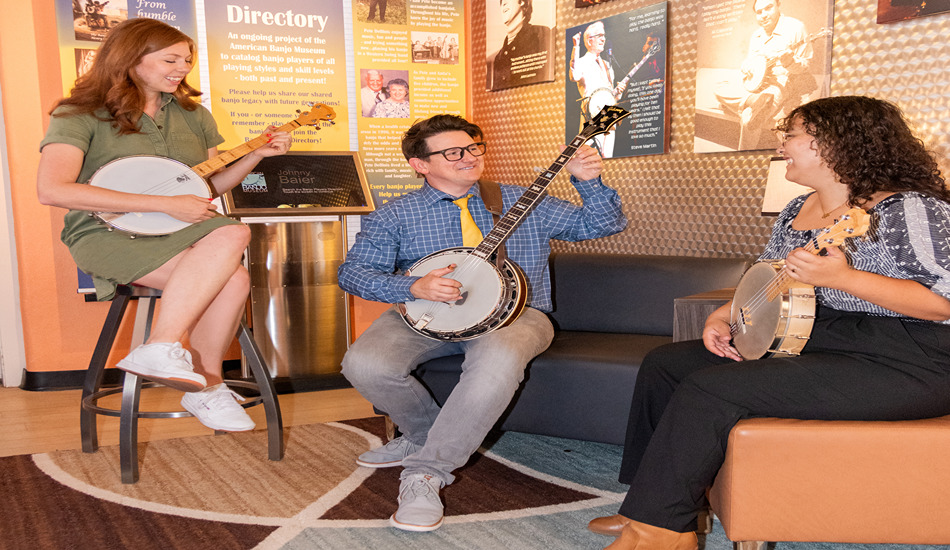
American Banjo Museum, Oklahoma City. (Photo credit: American Banjo Museum)
Among celebrity-owned banjos are those that have been played by Roy Clark, Earl Scruggs and Steve Martin. One banjo bears the autograph of Franklin Delano Roosevelt, who signed it for Atlanta banjoist Perry Bechtel after the performance at the presidential retreat in Warm Springs, Georgia. The museum will soon be getting the banjo played by actor Edward Norton (as folk musician Pete Seeger) in A Complete Unknown, the 2024 movie about Bob Dylan and the 1960s folk singing community in and around New York City.
Lucas Ross, the museum’s bubbly promotions and outreach director, has provided banjo tracks and live banjo music for The Muppets’ Kermit the Frog.
Groups touring the American Banjo Museum can arrange to have a pizza or sub sandwich lunch and hear a banjo-strumming performance at Your Father’s Mustache, an in-house venue modeled after one of the popular banjo nightclubs of the 1960s.
South of Bricktown along the Oklahoma River are two exciting destinations—the Horizons District and Boathouse District.
Oklahoma City’s Hub for Water Sports
In the Boathouse District, Riversport Adventure Park offers whitewater rafting and tubing on the rapids course, plus kayaking and stand-up paddle boarding on the river. The tallest dry slide complex in the U.S. includes two 72-foot-long spiral slides and tandem 30-foot Sky Dive racer slides. The Sky Trail adventure course, with ropes, bridges and more, is the tallest in the world. And there’s ziplining across the river. Indoors, you can snow ski or hit the waves on a surf simulator.
Spectators come to Riversport to watch rowing competitions and dragon boat races. The park will host canoe slalom events in the 2028 Summer Olympics. It’s the official U.S. Olympic and Paralympic Training site for rowing and canoe/kayak.
Oklahoma’s Native American and Western Heritage
An emerging cultural and entertainment hub, the Horizons District is home to OKANA Resort & Indoor Water Park and the state-of-the-art First Americans Museum. Open since 2012, the museum tells the collective histories of the 39 distinctive Tribal Nations in Oklahoma today. Its Thirty Nine Restaurant and Cafe serves dishes flavored with Indigenous ingredients from across the Americas.
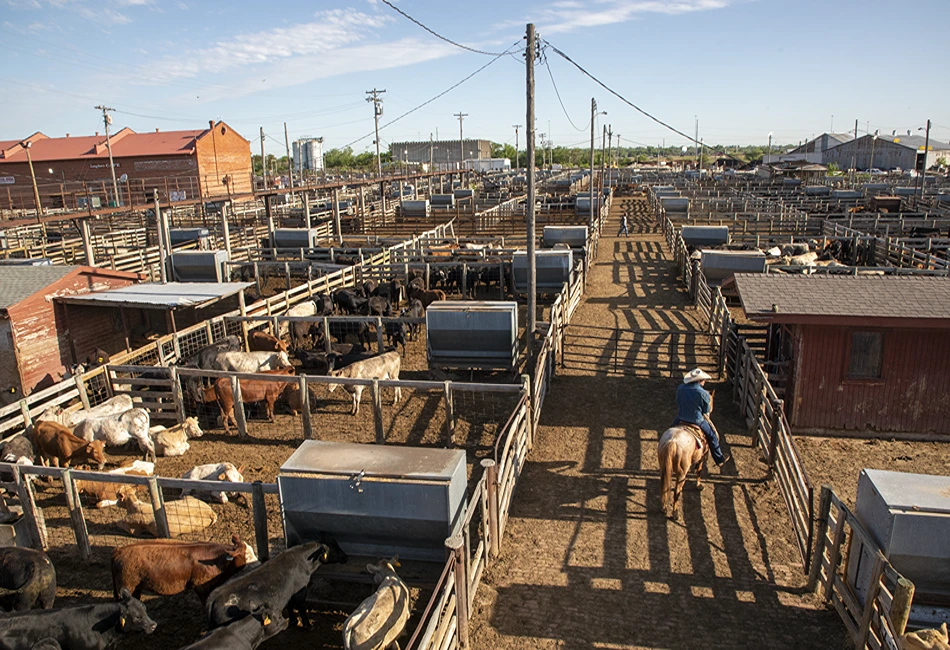
Oklahoma National Stockyards. (Photo credit: Oklahoma Tourism & Recreation)
Visitors can tap into Oklahoma’s rich Western heritage in Stockyards City. On Monday and Tuesday, live cattle auctions at the Oklahoma National Stockyards are open to the public. Shop for cowboy boots, hats and belts at Langston’s and Western Wear Outlet, and dine in style at the state’s oldest restaurant, Cattlemen’s Steakhouse, established in 1910.
The National Cowboy & Western Heritage Museum, another great Oklahoma City attraction, covers everything from pioneer and Native American life to rodeo traditions and heroes from the Silver Screen. Immerse yourself in the past at Prosperity Junction, a replica turn-of-the-20th-century cattle town, which includes structures like a saloon, school and church. The Western art collection features works by Frederic Remington, Albert Bierstadt and Charles M. Russell.
For information on other Route 66 destinations, subscribe to Leisure Group Travel for FREE.
By Randy Mink, Senior Editor
Lead Photo – Heart of Route 66 Auto Museum, Sapulpa, Oklahoma. (Randy Mink Photo)


